Turmeric powder is a popular spice used primarily in Asian cuisines. It also comes with many health benefits. Making ground turmeric powder at home is easy and cost-effective.
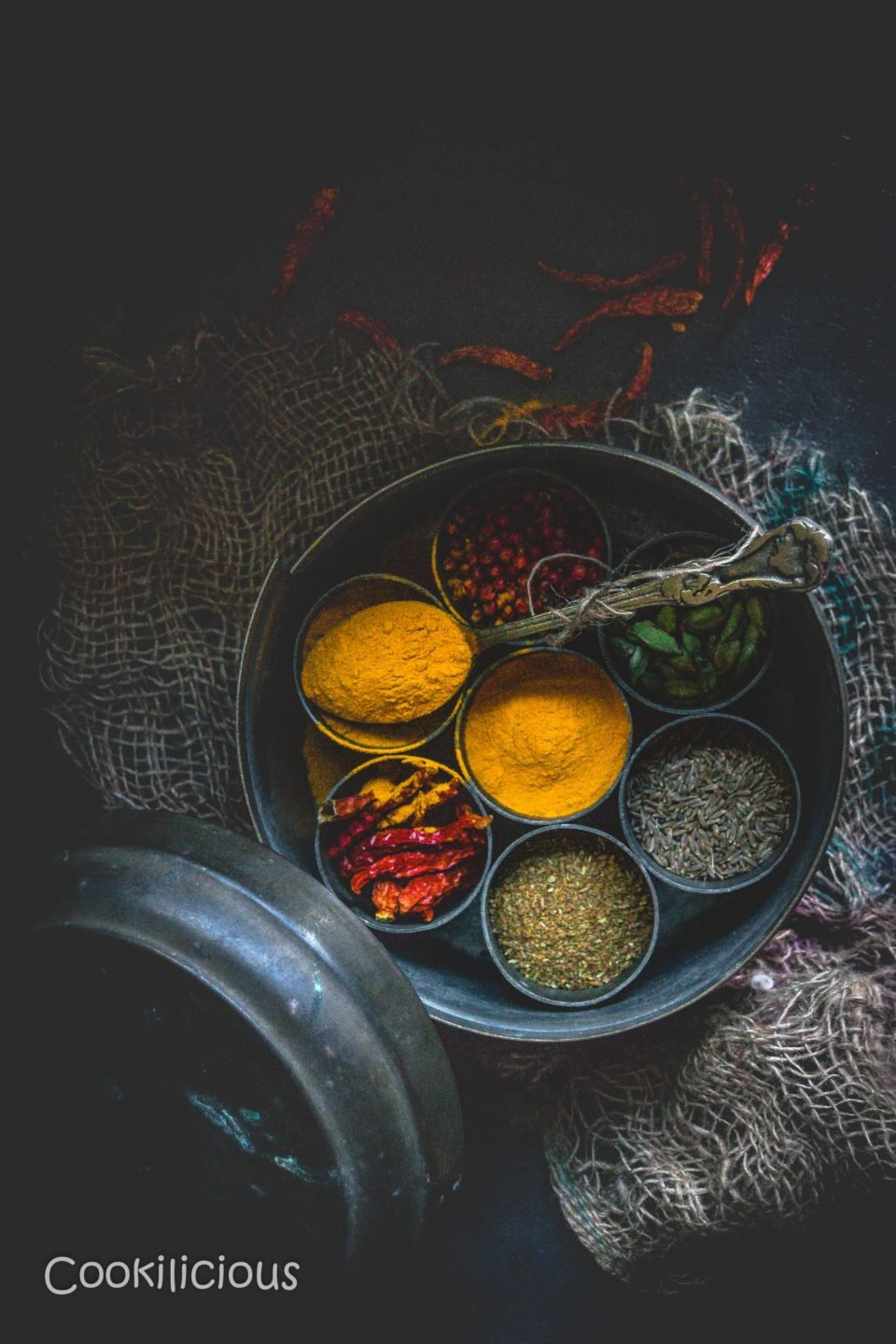
Jump to:
What Is Turmeric
It is a spice that comes from the turmeric plant. It is commonly used in Asian food and is known as Haldi in Hindi. Turmeric can be found in the stem of the Curcuma Longa plant. The root resembles ginger and is bitter to taste if eaten raw. Its most popular form of consumption is in its powder form. Curcumin, the main active ingredient in Haldi has powerful anti-inflammatory effects and is a very strong antioxidant.
What Does Turmeric Taste Like
It is mildly aromatic and has scents of orange or ginger. It has a pungent, bitter flavor. Its slightly warm and peppery flavor works well with most vegetables and fruits. It's also gluten- and dairy-free. Be it sweet or savory, you can use it in any recipe. It's used extensively in cooking and even a small amount aids in digestion.
Non Food Uses Of Turmeric
It can be used in many different ways and not just in the kitchen. Turmeric is also used during religious functions in India and is considered very pious in Hindu tradition. It's also used as a natural dye. Ground Haldi powder does wonders on the skin and is used in many beauty treatments.
It has a lot of medicinal properties too. It's applied over cuts and burns because it has strong antibacterial properties, which can help heal cuts and protect them from infection. Due to its anti-inflammatory properties, it helps heal colds and coughs.
In Hindu culture, we use it even at our weddings. Because turmeric is associated with fertility and prosperity, it is used during the Haldi ceremony at our weddings. The ground turmeric powder is mixed with water to form a thick paste and family members apply it to the bride and groom's face and body. It's a fun-filled pre-wedding ceremony.
Haldi is used to symbolize both inner purity and inner pride. Turmeric water is offered to the gods in the temples as part of a Hindu ritual called Abhishekam.
Making Ground Turmeric Powder At Home
Most store-bought spice mixes and blends are processed, not fresh, of poor quality, unnaturally enhanced by adding food color to make it look more authentic, not organic, and of course expensive. Homemade Haldi powder has a natural dark yellow-orange color. It is very aromatic and has a strong earthy flavor that you will love. It's completely preservative free and does not contain any artificial colors.
Back home, it is a common practice to make spice mixes at home. I have seen my grandma, mom, MIL, and aunts do this and now I do it too. Back in the days, there were large joint families staying together, so these spice powders would be made in bulk and stored. Today, however, I make it in small batches based on our daily consumption. Besides Haldi powder, some other frequently made spice mixes are Sambhar Powder, Molagapodi, Garam Masala, and Coriander Cumin Powder.
Why Make It
- Needs just 1 ingredient
- It is just a 4-step process - Wash - Boil - Dry - Grind
- However, the process takes a week
- It is one of the easiest spice mix to prepare this recipe at home
How to make it 🔪
Want to save this recipe?
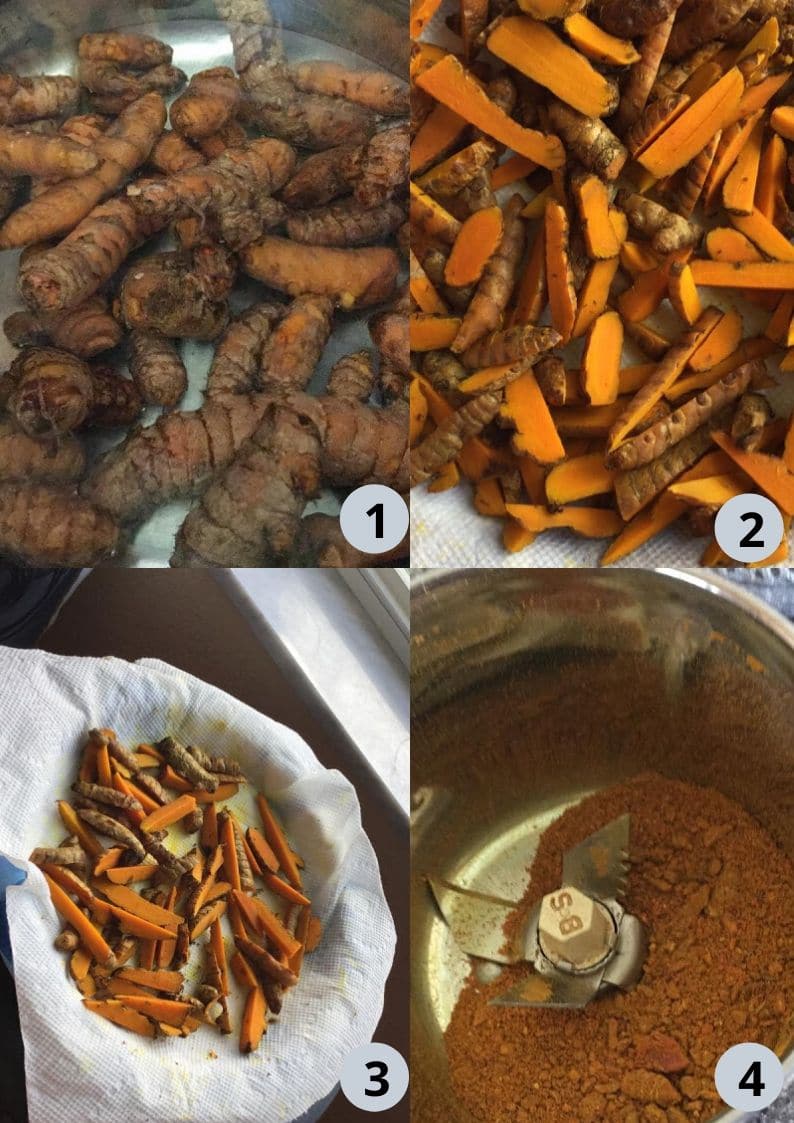
- Wash the roots thoroughly under running water for a minute. Boil water in a pan and then immerse these roots in it. Drain the water. Roughly chop the roots after they have cooled down completely.
- Place a kitchen towel over a disposable plate to soak in the excess water. Spread the chopped roots over it. Do not crowd them, use multiple plates if needed. Spread them out evenly. You need not keep it in direct sunlight all the time. A well-lit, ventilated area by the window should do the job. Leave it there for a week. Keep tossing it every other day to ensure even drying. Over the week, you will notice that the roots will begin to shrink and get dried up. That is what we want.
- Grind into a fine powder. Depending on the power of your food processor or blender, you may want to sift the powder through a sieve and return large pieces to your food mill.
- Store the freshly ground turmeric powder in an airtight container. use in any recipe that calls for turmeric or haldi.
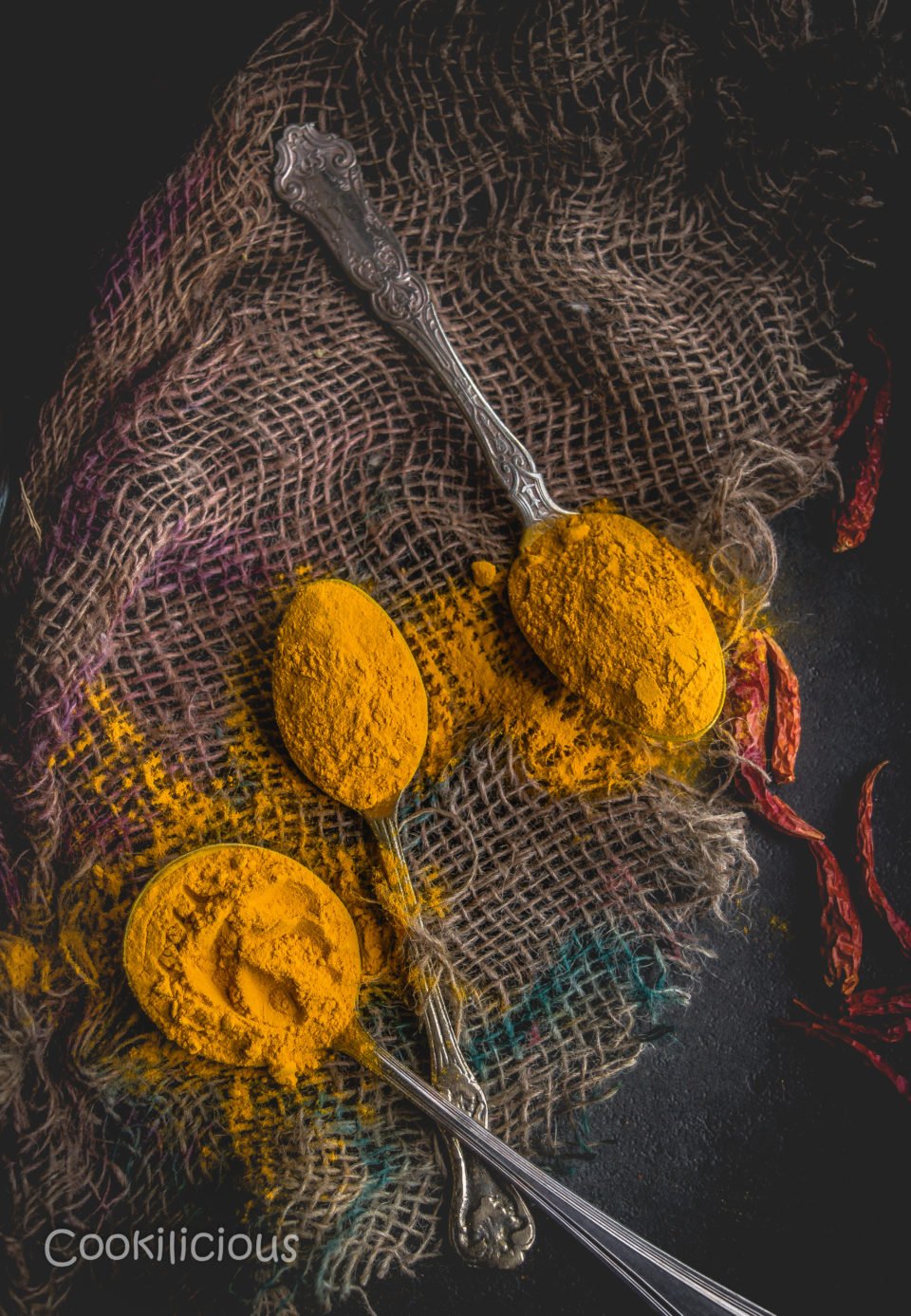
Serving suggestions 🍽
Enjoy this non-adulterated homemade spice mix in any recipe. Here are some of my recommendations:
- Use it in smoothies.
- Make the famous Golden Milk. This one is dairy-free.
- Add them to Dal.
- Flavor curries, gravies, and chili with it.
- Add color to bland-looking dishes like rice, quinoa, cauliflower rice, etc.
- Pancakes and crepes.
- Add them to soups.
- Flavor salads.
- Pump up the pasta.
- Use as a natural food color.
- Sprinkle over Avocado toast.
- Feel free to experiment with it in any sweet or savory recipe.
Top recipe tips 💭
Work with gloves, paper towels, and disposable plates to avoid staining your hands and crockery. In case you do stain your hands while working with it, make a paste with lemon juice and baking soda and apply it over your hands. It's super effective at removing these stains.
Fresh turmeric has a short shelf life and you have to immediately dry and powder it. It also takes longer to dry but will give you the most authentic spice mix! Remember, just a teaspoon can go a long way! In most recipes, you will only need to add a maximum of one teaspoon to give it the required flavor and color.
Recipe FAQs
You can find fresh and dried roots in Asian/Indian grocery stores and even leading grocery stores like Publix. You can buy from Amazon as well.
Choosing good quality turmeric is critical. Get organic, chemical-free fresh roots. Select big, smooth roots that are mold-free.
Turmeric rhizomes cannot be dried just like that. They need to be boiled first. Boiling softens the roots & makes the drying process quicker. It helps remove the raw odor coming from these roots & helps kill germs present in the soil. No need to cover the pan while it's boiling.
Directly use dried turmeric. Grind it to a fine powder using a high-power blender. This way, you end up saving more time.
It is a week-long process and depends on the weather and temperature. Place them by the window sill where there is ample sunlight and ventilation.
You can even dry it under direct sunlight or use an electric food dehydrator. Sun-dry until the roots become crisp or else the powder will spoil easily. The desired texture is dry and crisp, almost brittle to the touch.
Use a high-powered blender like a coffee grinder or an Indian Blender. Steel or glass jar blenders are preferred because it's easy to clean the stains.
Grind when it's still crisp. This will ensure fine grinding.
It stays good easily for 6 months if stored properly in an airtight container.
Use a glass jar instead of plastic as it's easy to clean and remove stains.
The container should be free of any moisture, and clean. Store it in a cool place. There is no need to refrigerate it.
More Recipes Using Ground Turmeric Powder
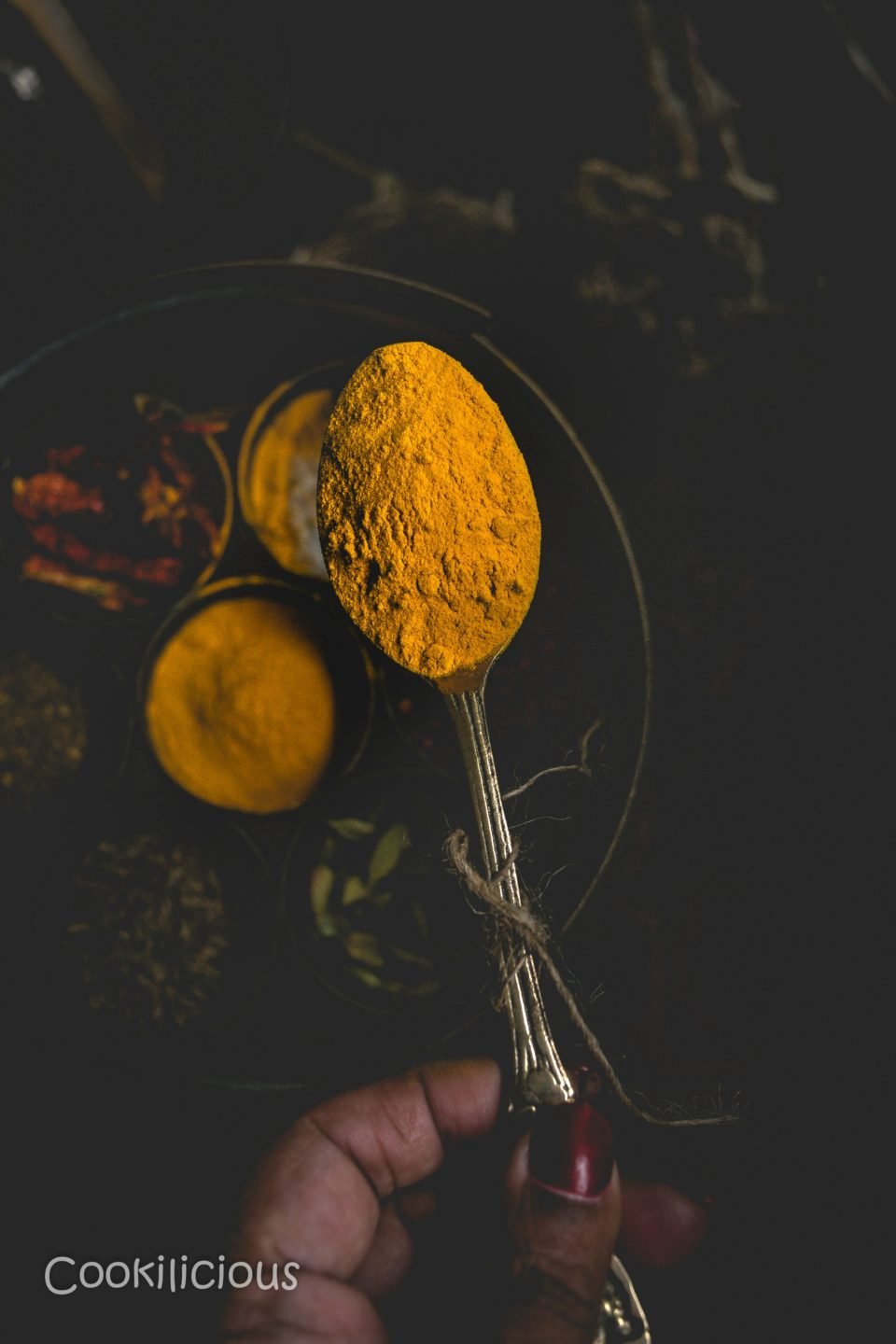
⭐️ Subscribe to the Cookilicious Newsletter and receive new recipes straight to your inbox! You'll receive my FREE Vegan Beginner's guide as a gift. Ready to elevate your cooking game? Purchase my Cookbook - The Essential Vegan Indian Cookbook today!
Recipe 📖
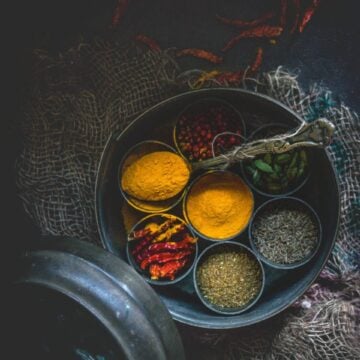
Homemade Turmeric powder
Equipment
Ingredients
- 4 lb Turmeric roots
- Water to boil
Instructions
- Wash the turmeric roots thoroughly under running water for a minute.
- Boil water in a pan and then immerse these roots in it.
- Let it boil for 45 minutes on low-medium flame. Froth will begin to appear at the top.
- Drain the water. Roughly chop the roots after they have cooled down completely.
- Place a kitchen towel over a disposable plate to soak in the excess water.
- Spread the chopped roots over it.
- Do not crowd them, use multiple plates if needed. Spread them out evenly.
- You need not keep it in direct sunlight all the time. A well-lit, ventilated area by the window should do the job.
- Leave it there for a week. Keep tossing it every other day to ensure even drying.
- Over the week, you will notice that the roots will begin to shrink and get dried up. That is what we want.
- Grind the turmeric into a fine powder.
- Depending on the power of your food processor or blender, you may want to sift the powder through a sieve and return large pieces to your food mill.
- Once cooled down, store the freshly prepared turmeric powder in an airtight container.


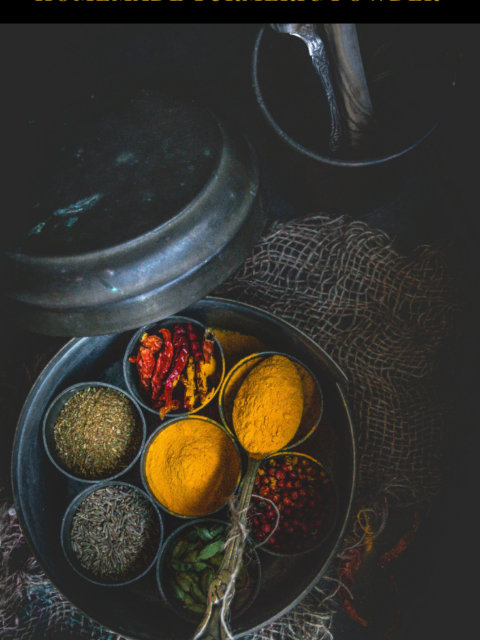
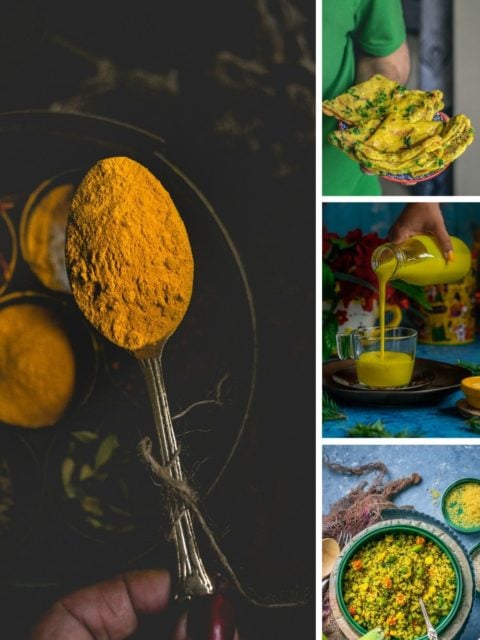
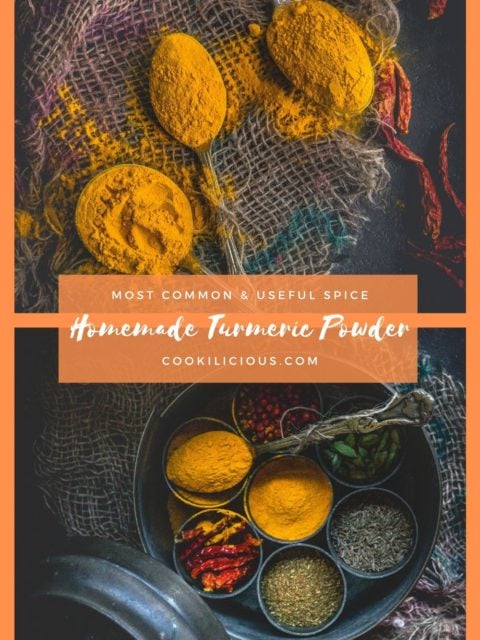
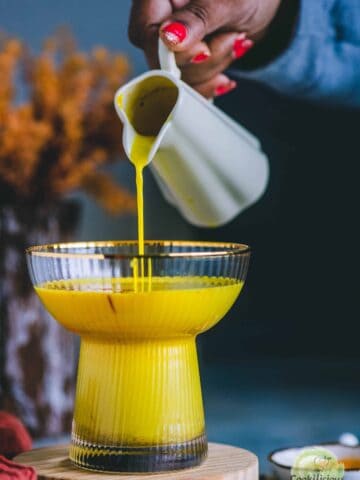


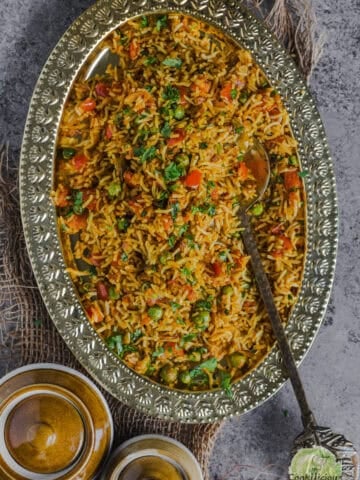

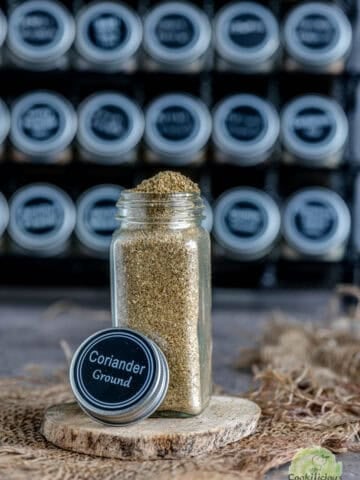
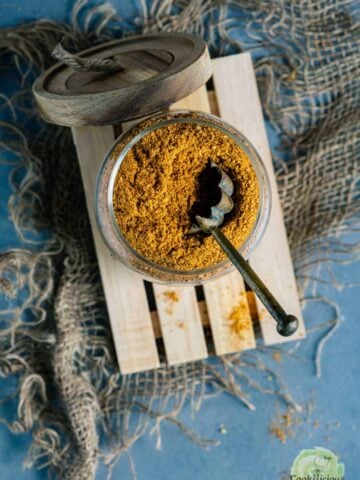
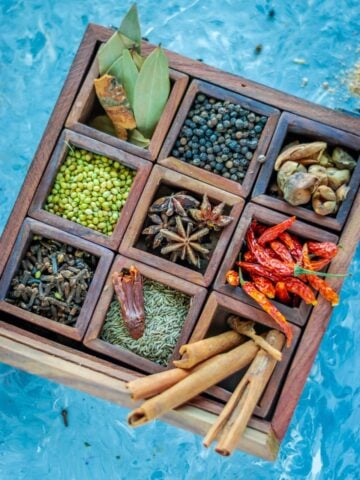
Naturesbox says
Hello, Turmeric, a staple in Asian cuisine and Hindu traditions, offers not only a pungent, bitter flavor but also a myriad of uses, from culinary to religious and medicinal, making it a versatile spice deeply ingrained in various cultures, with homemade preparations ensuring freshness and authenticity while offering numerous health benefits. Thanks for sharing, Keep going on.
Priya says
Thank you.
Lynne says
Can’t wait to try this! Do you know (roughly) how much dried turmeric you get with this four lbs of fresh after it is dried?
Priya says
You will get approx 1 cup of ground turmeric from 4 lbs of dried turmeric.
Laura says
Hello Priya, is it ok to dry the roots after boiling, in a dehydrator? I’m, in the process of boiling them now. Thank you.
Priya says
I have not tried the dehydrator. I guess it should work. I always follow the traditional way of sun drying it. But dehydrator should work. The key is that the turmeric is fully dry before grinding. Hope this helps. Please let me know how it goes. Thank you.
Shweta Bhatt says
Trying it already. My turmeric is on slow boil. Can't wait to have my home made turmeric!! Thank you so much for this wonderful share!
One quick question though - can i store dried turmeric for a couple days and then blend it? Or do i have to blend it immediately?!
Priya says
Thank you so much. Glad you found the recipe useful. Yes, you can. I usually grind it immediately.
Jesse says
Very well explained. Turmeric is widely used in Ayurveda (Ancient Indian Medication). I learned about turmeric from iahas.com and since then I am a big fan of this spice. I have tried a couple of tea and milk using turmeric. It tastes good actually. I will add your blog to my list.
Priya says
Thank you so much.
Anand says
So no need to peel the turmeric?
Priya says
Yes, no need to peel it
Simran says
I love how you explain the procedure step by step through pictures and text. Such an informative post!!!
Really liked it!!!
Priya says
Thank you
veenaazmanov says
This is such a lovely and informative post. Thanks for such wonderful knowledge. Love the health and medicinal benefits it has and the amazing uses too. Homemade is the best.
Priya says
Glad you liked it. Yes, it is a very good and useful spice
Adrianne says
Wow, what a cool recipe. I love the styling and your photography is perfect. I have never even thought to make turmeric powder but you make it look so easy. Thanks for sharing.
Priya says
Thank you so much. 🙂
Nart at Cooking with Nart says
This is so cool! I love drying my own herbs and making my own spices!
Priya says
I know right? Making it at home is so much fun
Alison says
Wow! I love turmeric and use it almost everyday! I've never thought to make my own but now I'm going to have to give it a try!
Priya says
Yes, do try it..its so easy to make
Irina says
I genuinely believe that everything made at home tastes better, and this popular spice is not an exception. Thanks for sharing tips: you just answered to each question possible and impossible. 🙂
Priya says
Thank you so much 🙂
Ibukun Sola says
Kudos to you for write-up, in fact have made a lot of mistake until I saw this and really helpful, once again tnx u so much
Priya says
I am so happy to hear that! Thank you
Pranit Madke says
Nicely elaborated thanks for the trick, I hope you will not mind the pic of haldi to be used!!!!!!!!
Priya says
Thanks. As far as credit is given to me, you can use the pic. Please let me know once you use it and share it with me as well.
Laura Aniamaka says
Thanks for this write-up, it's very helpful.
Priya says
I am glad you found it helpful.